“One glance at a book and you hear the voice of another person, perhaps someone dead for 1,000 years. To read is to voyage through time.” — Carl Sagan
In the 1970s and ’80s, the mysteries of space became accessible to people all over the world thanks to Carl Sagan, an American astronomer and planetary scientist known for his popular science books like “The Dragons of Eden” and “Pale Blue Dot.” His books have inspired countless people in their own pursuits, including science communicators Bill Nye “the Science Guy” and Neil deGrasse Tyson.
This is the power of books, and why making research accessible to the masses is so vital.
Carolina researchers are passionate about what they do and strive to share that with the world. In addition to the time they spend teaching, collaborating with colleagues, and overseeing research projects, many work on books to share their insights with audiences far and wide.
UNC Research Stories sat down with three faculty authors from three different schools across campus to discuss their recent book projects and unpack their inspiration, approach, and advice for aspiring authors.
Black Twitter Uncovered
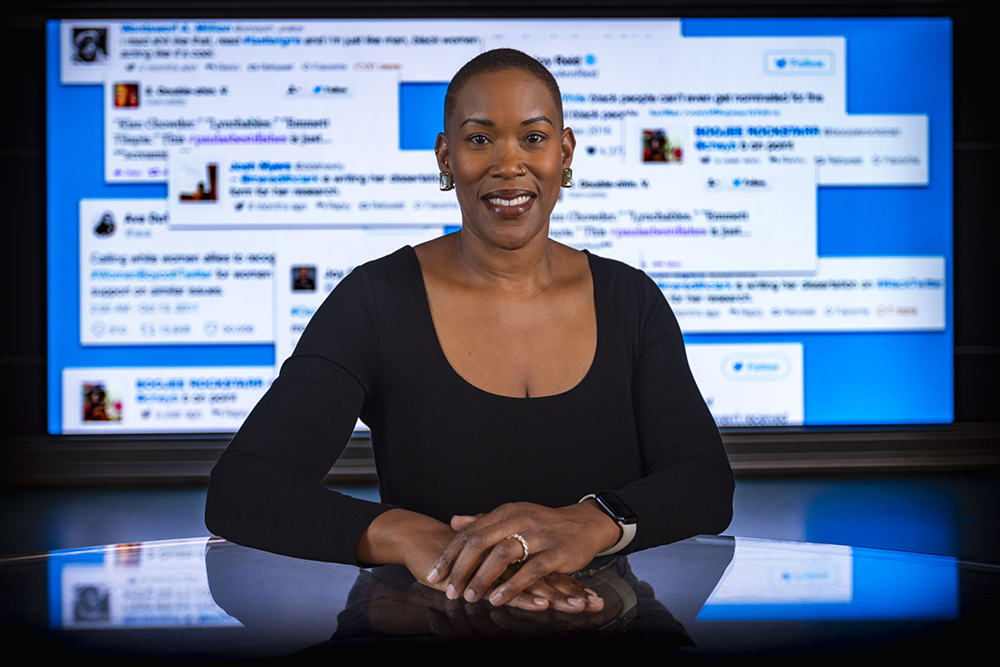 photo by Megan Mendenhall
photo by Megan Mendenhall Meredith Clark is an associate professor within the UNC Hussman School of Journalism and Media. Her book, “We Tried to Tell Y’All: Black Twitter and the Rise of Digital Counternarratives,” will release in December 2024.
Provide a short synopsis of your book.
My book explores how Black social media users subvert the digital divide narrative while confronting centuries of erasure, omission, and mischaracterization of Black life in mainstream media.
I draw on news media analyses, in-depth interviews, and my own observations to trace Black Twitter’s three levels of community connection and advance a theory of Black digital resistance, illustrating how Black social media users use the platform to annotate and narrate everything from play to protest to everyday life.
From chapters that recognize the “locomotive power” of Black women and femmes’ intellectual labor to a thorough takedown of so-called “cancel culture” as an abstract label designed to silence Black critique, the book offers readers a rich exploration of the latest chapter of Black media production.
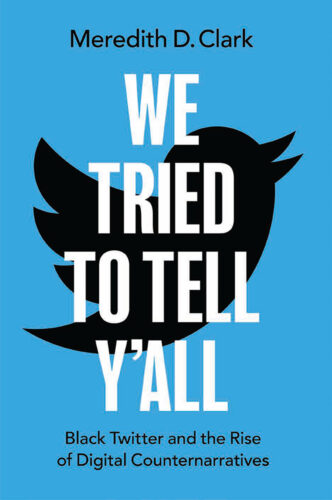
What inspired you to write this book?
“It has come to the editor’s attention that the [Lexington] Herald-Leader neglected to cover the Civil Rights Movement. We regret the omission.” Reading that correction in my hometown newspaper in 2004 solidified my understanding of what it means to be erased by journalists who don’t want to cover your community equally or fairly.
When I read the headline “How Black People Use Twitter” in August 2010, I knew that we were about to experience erasure or mischaracterization yet again. I channeled my anger about how I saw Black Twitter being covered into my dissertation project. But I didn’t realize it could or would be a book until a member of my committee encouraged me to see it that way.
What kind of research went into this project?
I do collaborative ethnography, inviting people to participate in the research process. The book is the result of many interviews, a few focus groups, and participant observations. I also analyzed news coverage and searched for digital archives.
How has writing this book changed how you view or approach research?
Writing this book has helped me think about how I want to focus my agenda and spend my time. My training is more geared toward writing articles and producing on a smaller scale at a faster pace. But I recently read a quote from one of my heroes, political scientist Melissa Harris-Perry, who said, “I learned that you can’t write a book in the margins of your life. I’d forgotten how much uninterrupted time it takes to write chapters, and how you have to push everything else aside and really focus.”
I aim to create that kind of space for myself, to find ways to put everything else aside and focus on my work.
Any advice for aspiring book authors?
Keep backup copies of everything and develop a file-naming convention that changes for each version and draft. You’ll be surprised at how many versions of your book exist by the time you finish writing it.
The dark side of American art
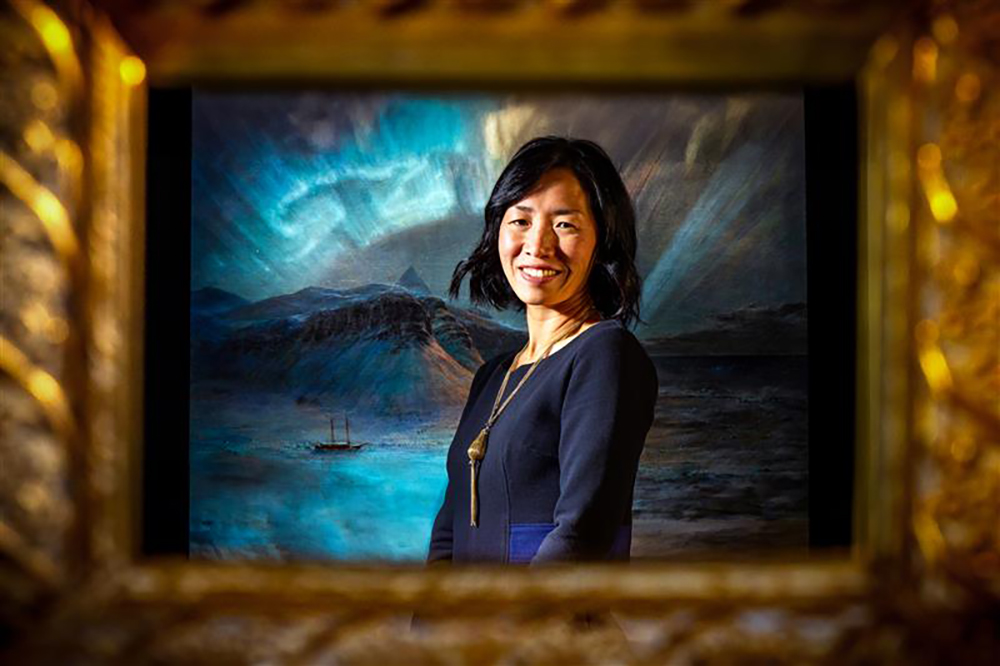 photo by Megan Mendenhall
photo by Megan Mendenhall Maggie Cao is the David G. Frey associate professor in the Department of Art and Art History within the UNC College of Arts and Sciences. Her book, “Painting U.S. Empire: Nineteenth-Century Art and Its Legacies,” will release in January 2025.
Provide a short synopsis of your book.
This is the first book to explore the relationship between 19th-century art and U.S. global forms of imperialism — an expansionist ideology of establishing control over other nations. I examine how artists agreed with or resisted ascendant imperialism, offering new readings of canonical works, including landscapes of polar expeditions and tropical tourism, still lives of imported goods, genre painting, and ethnographic portraiture.
I also tackle the legacy of U.S. imperialism, examining Euro-American painters of the past alongside global, anticolonial artists of the present.
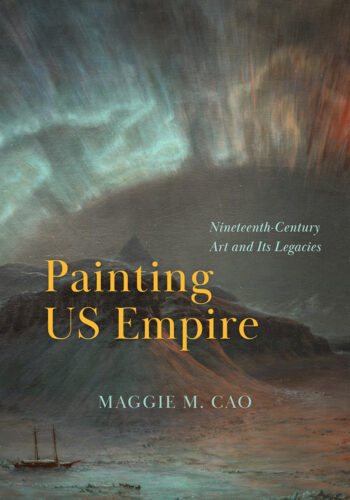
What inspired you to write this book?
I started my career as a scholar of American landscape painting. I was researching landscapes of the Arctic, and because the region was so tied up with imperialism in the 19th century, I figured that I should read a book about U.S. art and empire in a global context. I was shocked to find that such a book didn’t exist despite similar volumes on British and French art. I decided to fill the void.
What kind of research went into this project?
As with most art history about the 19th century, it involved a combination of archival research — reading artists’ papers, periodicals, and rare books — and serious time looking carefully at works of art. I also read lots of secondary literature across disciplines on topics pertaining to empire. For my chapters on contemporary artists, my research involved reading exhibition catalogues and press reviews and sometimes interviewing the artists themselves.
I did most of the writing in about three years, but the ideas had been brewing for a decade or more. When I first conceptualize a project, I do a lot of research and test out the material at lectures and conferences. One of the chapters was inspired by a paper I wrote and presented in graduate school.
How has writing this book changed how you view or approach research?
This is the first time I have written substantially about contemporary art. While I still consider myself a scholar of the 18th and 19th centuries, I feel much more comfortable writing about living artists now. The book also led to some exciting collaborations with practicing artists. I developed strategies to make the historical leaps between past and present cohesive in my book, so in the future, I will continue to think about historical art topics in a transhistorical way.
Any advice for aspiring book authors?
Be bold with methods, but at the end of the day, even academic books need to tell a good story.
Heroines of history
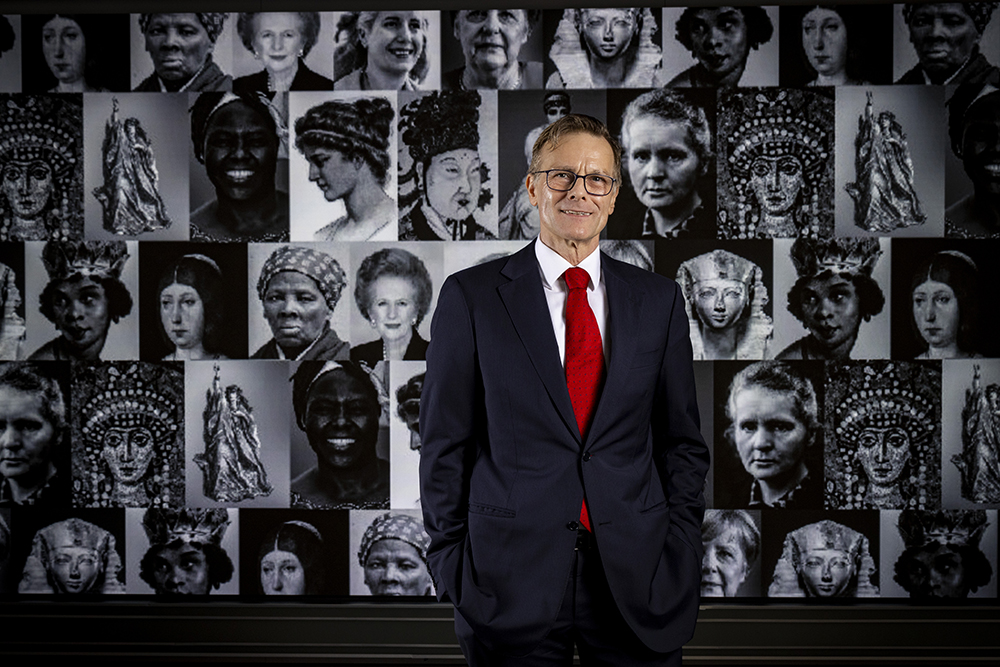 photo by Megan Mendenhall
photo by Megan Mendenhall Jan-Benedict Steenkamp is the Knox Massey Distinguished Professor of Marketing and Leadership within the UNC Kenan-Flagler Business School. His book, “Warrior, Queen, Scientist, Activist: Gritty Women Who Bent the Arc Of History,” released in March 2024.
Provide a short synopsis of your book.
This book tells the stories of 25 women, from ancient times to the present, who changed history through bold actions during defining moments. At these critical junctures, they had a choice: take the safest and least risky option or challenge the status quo. They wielded the sword, seized political power, or challenged societal norms and laws to transform society. Some women were virtual saints, and others were more ruthless than any man of their time. One even instituted the first police state in history.
These women all faced enormous odds. The social norms of their time were so pervasive and insular that society bullied them at every touch point, just as social media users bully women today, especially those who dare to make a difference. The women responded to challenges, setbacks, and disappointments by redoubling their efforts. We can learn from and be inspired by their lives, grit, and mistakes.
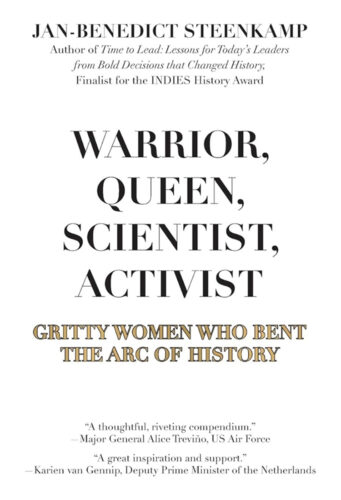
What inspired you to write this book?
Most history studies highlight male figures, but my experience shows that women have made equally significant contributions. Inspiration from a leading female politician who succeeded where a long string of male predecessors failed and decades of teaching top-performing female students motivated me to explore the topic of great female leaders.
On the unevenly gendered playing field of great historical figures, these women had to overcome significant obstacles, making their achievements even more impressive when compared to their male counterparts.
What kind of research went into this project?
History books like this one are based on extensive literature research. I read countless books and academic articles. For recent women, I consulted newspapers and magazines and drew upon sources in English, German, French, Latin, and Dutch.
The selection of these women was not arbitrary. The goal was to document the prevalence of great women across various fields, historical periods, geographical regions, and leadership types.
With this comprehensive structure in mind, I conducted preliminary research to identify women who met these criteria. The collective result is a book that convincingly demonstrates the pervasive influence of great women across time and space.
How has writing this book changed how you view or approach research?
Much academic research is quite narrowly focused, which also applies to my research. Writing this book forced me to think big-picture about the broader context in which these women lived and led. It broadened my view on the interaction between people and their socioeconomic, cultural, and political environments.
Any advice for aspiring book authors?
Before starting a project, think carefully about the message you want to convey and how to structure your argument. This will save you time. And when you consider writing a book, only do it if you are passionate about the topic. It takes a lot more time than you think.


